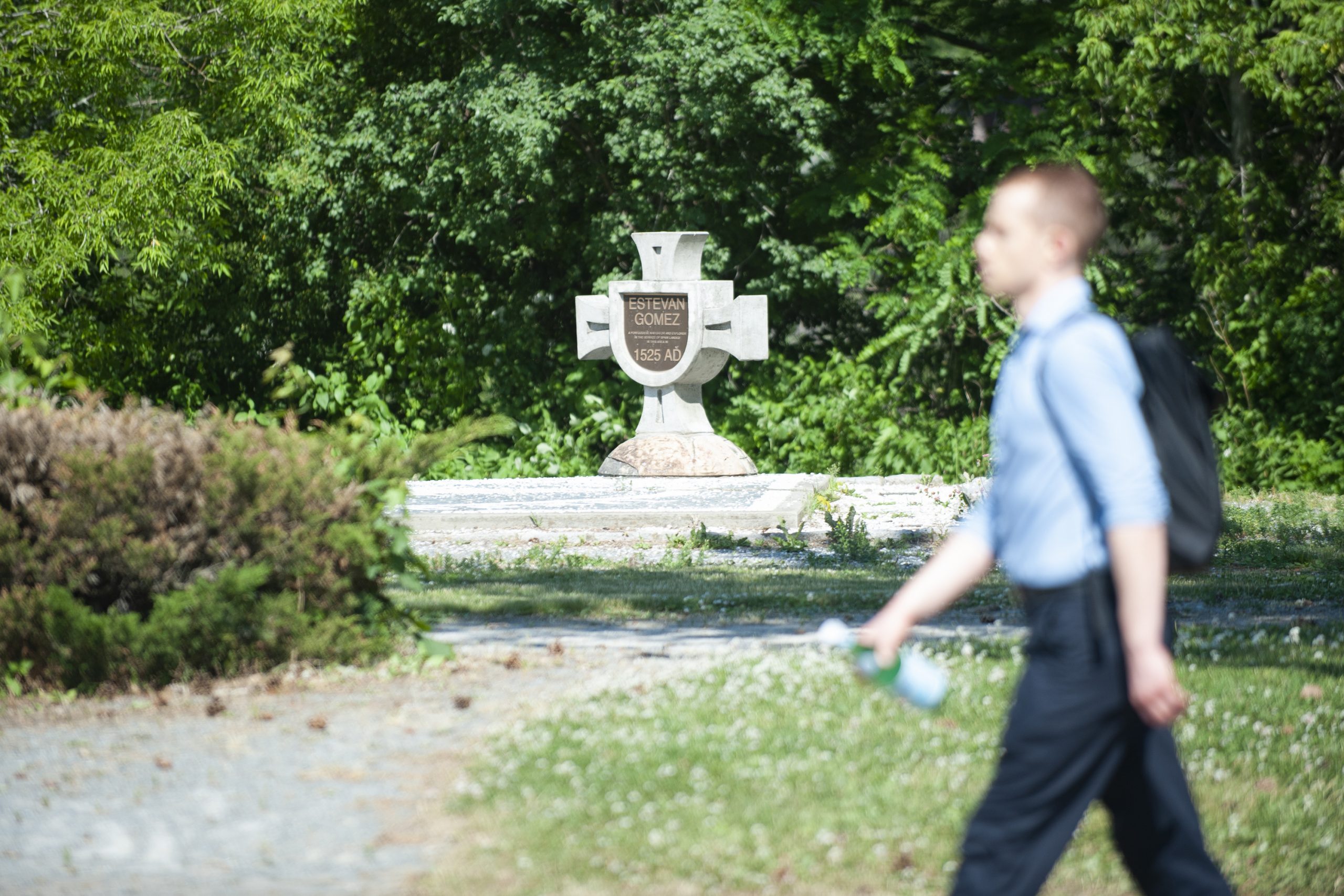Bangor could soon become the latest U.S. community to remove a monument celebrating a white man whose historical oppression of dark-skinned people has not received the same attention as his accomplishments.
On July 6, the City Council is set to discuss a proposal from the Penobscot Nation to remove the small concrete cross along the Bangor Waterfront that memorializes Estevan Gomez, a Portuguese explorer who may have been the first European to sail up the Penobscot River about 500 years ago.
[crowdsignal poll=10571200]
What the monument doesn’t say about Gomez is that he went on to capture some 50 Native people and sail back to Europe with them, where his efforts to sell them into slavery were quashed by Emperor Charles V of Spain, according to one account.
The City Council plans to discuss removing the monument early next month after Maulian Dana, the tribal ambassador for the Penobscot Nation, raised it at a meeting on Monday night.

Dana is asking the city to consider removing the monument from the waterfront, where it sits in a small park that also has been named after Gomez. In an interview, she suggested that it could be displayed somewhere else, such as a museum where it could be viewed alongside more context about his life.
Councilors will consider the proposal as communities across the country have recently been taking down memorials to historically famous figures who owned slaves, murdered indigenous people or committed other racist atrocities. The new push to take down those symbols follows weeks of nationwide protests against racism and police violence following the late May killing of an unarmed black man by Minneapolis police officers.
READ MORE
Amid a racial reckoning, Waldo County questions its homage to a slave-owning general
Some Mainers are questioning whether places named after Samuel Waldo should be renamed.
“A lot of tribal members have been concerned with it throughout the years, knowing the history of this explorer basically abducting indigenous people and selling them or attempting to sell them into the slave trade,” Dana told councilors on Monday night. “It’s something that it’s probably time to address in this moment in history, where we’re thinking about what these things mean, these statues, these monuments, the Confederate flags and all of this stuff.”

The Bangor monument includes Gomez’ name in bronze letters followed by the inscription: “A Portuguese navigator and explorer in the service of Spain landed in this area in 1525 AD.”
It was donated to the city in 1999 by a group of Portuguese Americans from New Bedford, Massachusetts, and a nearby placard also includes a brief history of the first European explorers known to have arrived in Maine.
Council Chairperson Clare Davitt said that she agrees with the proposal to take down the monument and believes there is strong support for doing so, but added that there may be some pushback.
Joe Baldacci, a former city councilor who was the council’s chairperson at the time the city accepted the monument and is now running for the state Senate, also has expressed support for removing it. In an email to current councilors, he urged the city to work with New Bedford’s Portuguese community on a plan for doing so since its members spent thousands of dollars to create the concrete memorial.

Dana said that it would be appropriate for Bangor to remove the structure given how close it is to ancestral Penobscot lands and recalled an earlier decision by the city — when Baldacci was also its chairperson, in 2017 — to recognize Indigenous Peoples’ Day on the federal holiday honoring Christopher Columbus.
Given the death and violence that Columbus brought to Native communities during his exploration of the Americas, numerous statues of him have been removed by communities or protesters in recent weeks. Others depicting Ulysses Grant, Francis Scott Key, Confederate army soldiers and other European explorers have been coming down. On Monday night, a group of protesters tried to topple a statue of Andrew Jackson outside the White House,
There has also been new scrutiny of Gen. Samuel Waldo, a prosperous slave trader for whom Waldo County has been named.
“I think that a lot of times these conversations come about and people can be defensive or they think it is some sort of big political agenda,” Dana said of the proposal to remove the Gomez monument. “All it boils down to is respecting all citizens that call Maine home.”














You must be logged in to post a comment Login